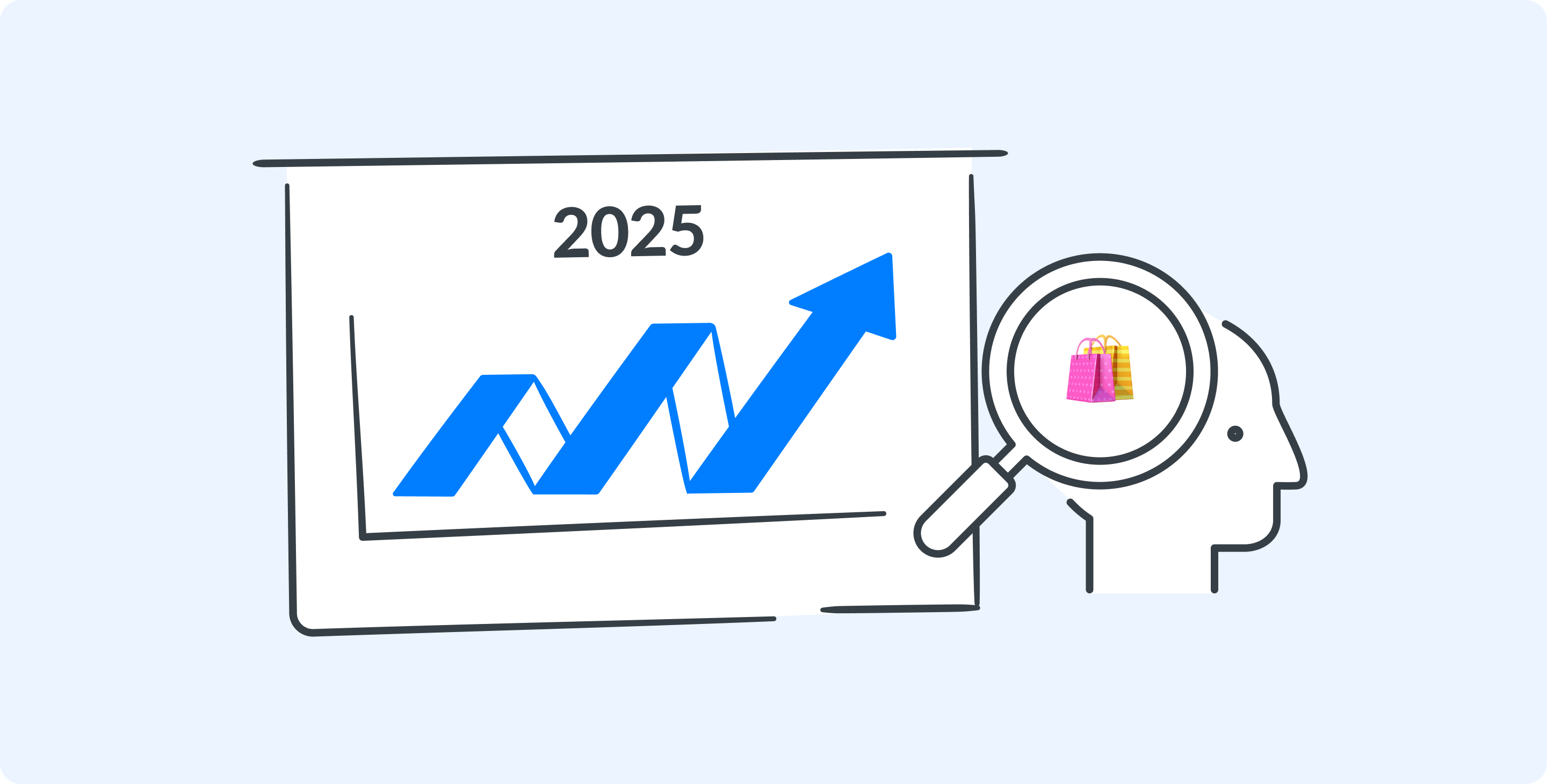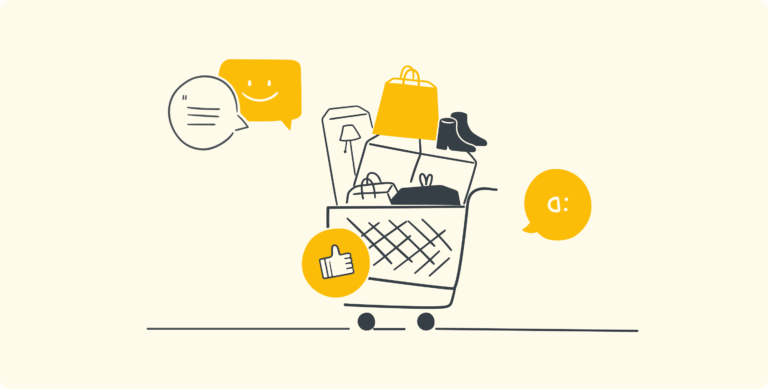It’s never been harder to predict emerging consumer behavior trends. The landscape is shifting, driven by economic uncertainty, rapid digital transformation, and evolving consumer expectations. What worked yesterday might fall flat tomorrow.
Experiences matter far more to today’s customer than brands, and Forrester predicts a 25% decline in brand loyalty in 2025. The question isn’t just what consumers want — it’s why, when, and how they want it.
Customer service experts will be central to navigating these changes. To stay ahead, they must leverage customer feedback and keep track of digital consumer trends. Understanding shopper habits is key to adapting strategies that will retain customers.
Let’s dive right into consumer statistics and consumption trends to watch in 2025!
Consumers today are digitally savvy, socially conscious, and they value personalization. They demand transparency, seamless interactions, and alignment with their values.
Key consumer profiles
🚂 The regulators — Seek order and frictionless experiences. They value consistency and predictability, preferring brands that deliver seamless shopping journeys across multiple touchpoints. They care about reliable service and empathetic customer support, and they prioritize businesses with clear return policies and fast shipping.
🌿 The connectors — Prioritize sustainability and transparency. They are drawn to brands with clear social and environmental responsibility statements (for example, an emphasized focus on eco-friendly packaging).
🕰️ The memory makers — Value nostalgia and meaningful connections. They seek products and services that build on life’s milestones. Their favorite brands celebrate human stories, craftsmanship, and aging gracefully.
🌐 The new sensorialists — Embrace digital-physical experiences and immersive technologies. More than any other group, they demand seamless integration between virtual and real-world shopping. Omnichannel support is a must.
Metrics to track
- Product feedback loops
- Customer retention rates
- Net Promoter Score (NPS)
- Customer satisfaction surveys segmented by profile
- Sentiment analysis on sustainability and ethical concerns
Companies that invest in identifying and engaging the right segments can build deeper customer relationships and allocate resources more effectively.
1. Everyone seeks smarter deals due to inflation
Consumers today are more cost-conscious than ever. They’re turning to Buy Now, Pay Later (BNPL) solutions to afford larger purchases without financial strain. Services like Shop Pay Installments, Afterpay, or Klarna enable consumers to split payments into manageable chunks.
They’re becoming strategic minimalists, favoring store-brand alternatives and focusing on value. Private-label products are more popular than ever.
According to RRD, 78% of shoppers are now strategically consolidating their purchases, using loyalty programs and focusing on maximizing their benefits. This is a clear sign of shifting consumer spending trends.
Strategies to increase loyalty
- Offer meaningful rewards. Generic point systems won’t cut it anymore. Today’s consumers expect rewards that feel personal and impactful. Think beyond discounts: offer VIP support, surprise-and-delight perks, or access to limited-edition items.
- Consider exclusive member-only pricing. Provide returning customers with special offers like free shipping, early-bird access to new products, or loyalty-only flash sales.
- Use bundling and subscription models to increase perceived value. Consumers are embracing smart convenience. Bundling and subscriptions cater to modern consumer habits by offering simplicity, savings, and control.
- Smart bundles — Curate product combinations that naturally go together (e.g., skincare kits, home office bundles).
- “Subscribe and save” options — Offer recurring delivery of essentials at a discount to ensure customer retention and boost long-term revenue.
- Themed or seasonal boxes — Customers enjoy subscriptions with rotating themes or limited-edition collections.
- Flexible subscriptions — Allow customers to skip, pause, or customize their subscription. Rigid systems immediately kill loyalty.
- Educate customers on product value to justify pricing. In an inflation-aware economy, price-consciousness is rising, but that doesn’t mean consumers won’t spend. They just need to believe it’s worth it. So position higher-cost items as smarter investments over time, and break down what goes into the cost.
- Use customer testimonials and storytelling — Real experiences help build trust and frame value in emotional terms.
These loyalty strategies are critical in the face of emerging buyer trends that prioritize trust, transparency, and real value over brand legacy alone.
Metrics that matter
- Price sensitivity feedback, which monitors how consumers perceive pricing adjustments and whether they feel an increase is justified
- Cart abandonment rates
- Repeat purchase frequency
- Feedback on promotional campaigns, collected via post-sale surveys, NPS scores, and social media engagement.
- Effectiveness of BNPL adoption rates
2. Shoppers use social media to discover opportunities
With 82% of shoppers using social media for product discovery, platforms like TikTok, Instagram, and Facebook have become vital sales channels.
Unsurprisingly, Gen Z and millennials are far more likely to follow internet trends and purchase via social media than older generations; at the same time, all buyer demographics expect brands to have a solid social media presence.
Strategies to increase loyalty
- Use social media as a direct customer service channel
- Respect the consumers’ reliance on social proof such as reviews, influencer endorsements, and customer testimonials
- Respond to inquiries and complaints in real time
- Produce short-form video content
- Provide clear messaging about security, keeping in mind that 34% of consumers say they’d shop via social media if they knew their data was secure
To successfully leverage digital consumer trends, your brand must develop an authentic voice — one that feels human, relatable, and aligned with your audience’s values. Today’s consumers can spot insincerity fast, but speaking with honesty and personality leaves an impression.
Metrics to track
- Social sentiment analysis
- Engagement and response times
- Conversion rates from social ads
- Click-through rates on social campaigns
3. Brand loyalty is waning, but trust and values still matter
Customers are quick to switch brands when their values aren’t reflected. To understand buying trends, today’s brands need to ask: What are consumers really looking for in the companies they choose to support?
Strategies to increase loyalty
- Transparent sourcing and production — Buyers increasingly research brands’ environmental and labor practices. Share behind-the-scenes content on sourcing and manufacturing; use traceable supply chains and publish data on your website. Highlight certifications (organic, cruelty-free, fair trade…).
- Take a stand on issues that matter — Whether it’s climate action, community-building, or mental health, consumers gravitate toward brands that reflect their values. But authenticity is key: align cause marketing with your core mission, and involve your team in impact initiatives.
Consumers in 2025 want to see tangible impact, not just marketing messages. Donate a percentage of proceeds to causes, launch take-back or recycling programs, and reward customers for sustainable behaviors.
Metrics to track
- Brand trust score via customer surveys
- Engagement with mission-aligned campaigns
- Sentiment analysis in open-ended feedback
- UGC (user-generated content) related to social/environmental impact
- NPS segmented by value alignment
4. Customers are more AI-savvy than ever
Generative AI is becoming a core component of the customer experience. Your shoppers expect proactive support, predictive experiences, and instant gratification — all of which are shaping future shopping trends.
Strategies to increase loyalty
- Use predictive analytics and machine learning to surface relevant offers and content
- Personalize emails, push notifications, and recommendations
- Suggest restocks or repurchases based on usage patterns
- Blend AI with human agents for complex queries
At the same time, it’s important to remain flexible, as some consumers find AI-driven personalization to be invasive. Disclose when customers are interacting with AI, and provide opt-outs for personalization.
Metrics to track
- AI interaction satisfaction score — use post-interaction CSAT surveys
- Personalization opt-in rates
- Resolution times for AI vs. human support
- Conversion rates from AI-driven recommendations
5. Convenience is currency
Time-starved consumers are prioritizing brands that eliminate friction. In 2025, convenience is no longer a perk, but an expected part of the customer experience. From ultra-fast shipping to one-click reordering, seamlessness drives loyalty.
Strategies to increase loyalty
- Streamline mobile checkout flows
- Enable one-click reorders or subscriptions
- Offer guest checkout and autofill options
- Offer same-day or next-day delivery, with live updates on order status
- Create intuitive self-service options, which includes robust help centers and chatbots
Metrics to track
CES is the best tool for understanding points of friction in the customer journey. You should also track:
- Checkout abandonment
- Fulfillment satisfaction score
- Support ticket deflection via self-service
6. Zero-party data is the new gold
With tightening privacy regulations and phasing out of third-party cookies, zero-party data — information a customer willingly shares — is now essential for personalization.
Consumers are more open to sharing preferences when it leads to a better experience. But earning that trust requires clarity, reciprocity, and continuous feedback.
Strategies to increase loyalty
- Ask with intention and value. Customers don’t mind sharing — if there’s something in it for them. Use quizzes to gather insights in fun, value-driven ways.
- Make it clear how the data will be used — transparency builds trust.
- Tailor experiences using shared insights. Personalization should feel effortless. Use zero-party data to deliver hyper-relevant content, offers, and recommendations. Think: personalized content journeys, smart bundles, and customizable subscriptions.
- Make data collection a two-way conversation. Treat zero-party data as an ongoing dialogue, not a one-off ask. Use seasonal check-ins, microsurveys, and interactive moments to keep preferences up-to-date.
Metrics to track
- Zero-party data opt-in rates
- Engagement with personalized experiences
- Customer sentiment on data privacy
- CSAT, CES, and NPS scores segmented by personalized journey
Predicting the future of consumption used to be about products. Now, it’s all about people.
Values, transparency, speed, and empathy are the key currencies of 2025. To leave a lasting impression and start building customer relations, your brand needs a clear answer to the question: Why should I care?
For today’s consumers, every purchase is a reflection of identity and intention. And if you want to stay part of that story, start by listening — the voice of the customer isn’t background noise, it’s your brand’s best strategy.
About Simplesat: Simplesat is the leading omnichannel survey app designed to enhance customer feedback management across various platforms, including Zendesk, Salesforce, and Gladly. Trusted by businesses worldwide, Simplesat delivers actionable insights that drive business growth and customer satisfaction.




